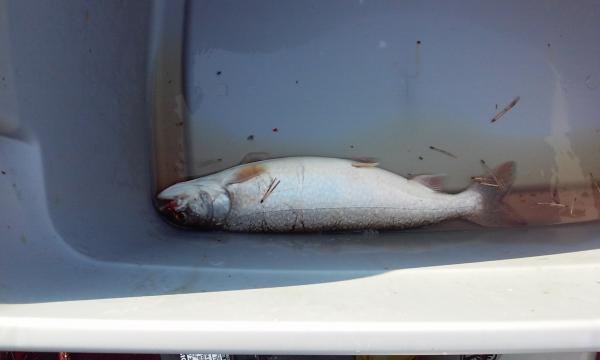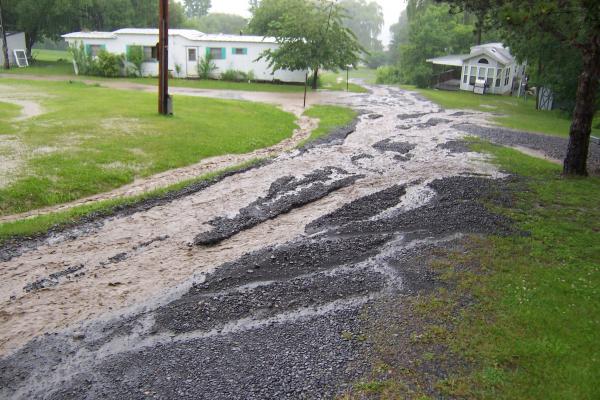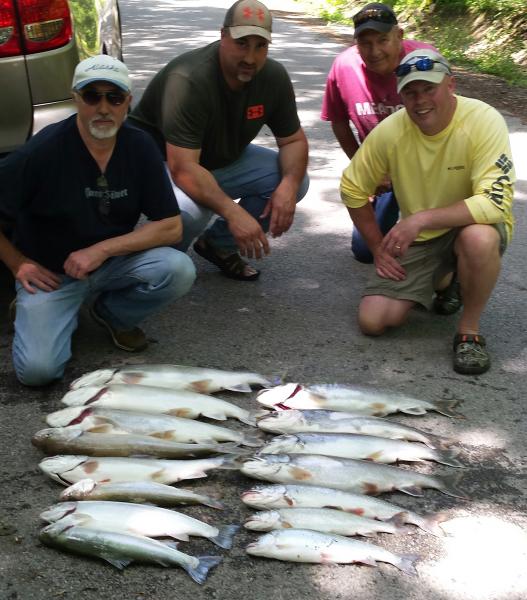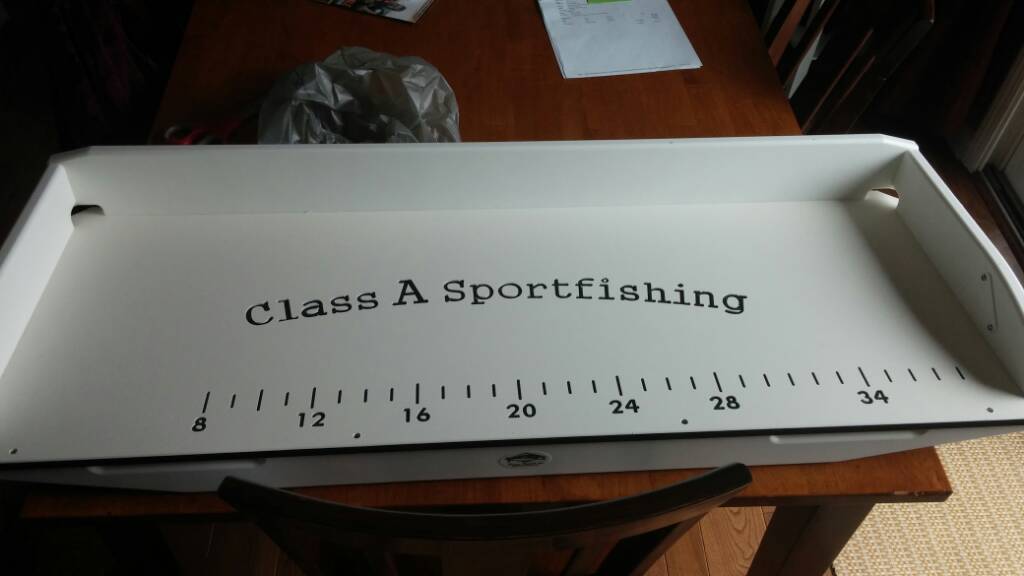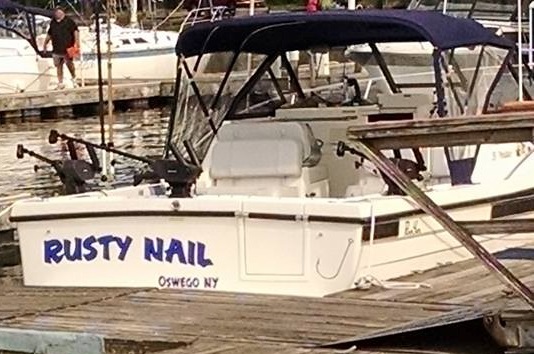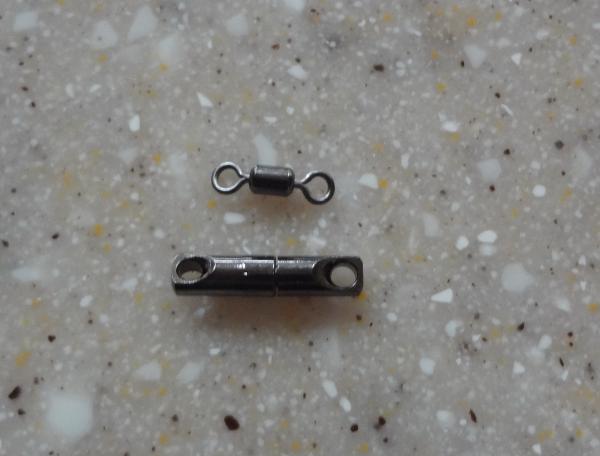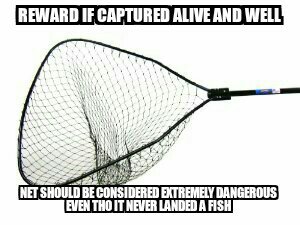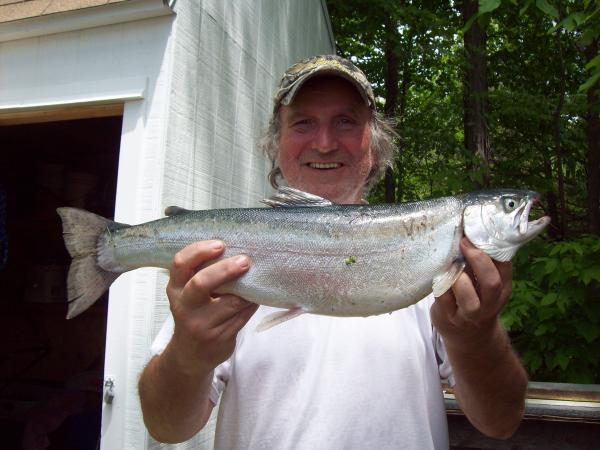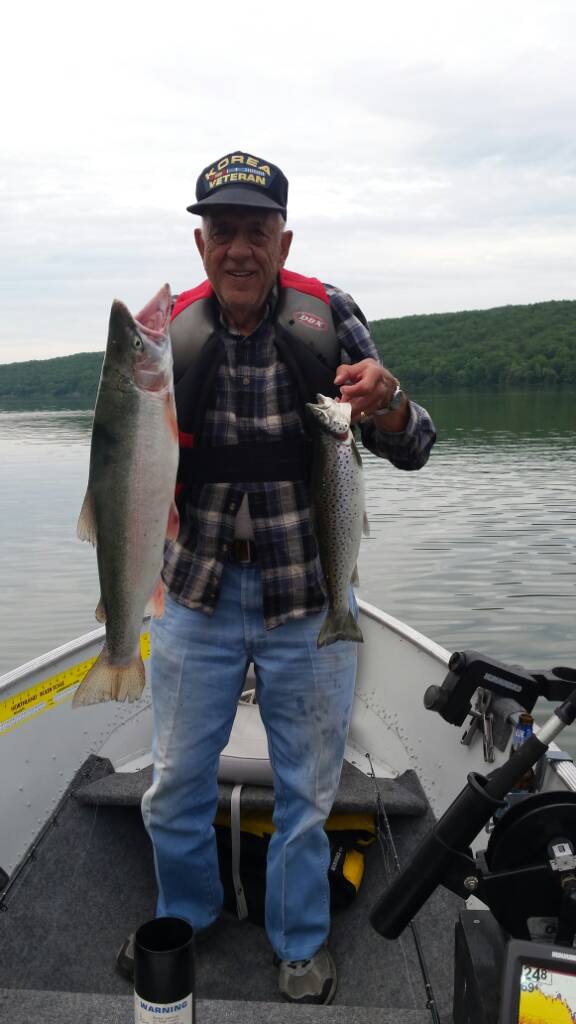-
Posts
13,872 -
Joined
-
Last visited
Everything posted by Sk8man
-
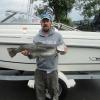
How to break the ice....
Sk8man replied to FishingTheFL's topic in Questions About Trout & Salmon Trolling?
Sounds as though you've been using a lightweight Sutton spoon (resembling a flutter spoon in thinness with a fixed hook) which are in fact used to pull copper. First of all pulling copper correctly is almost an "art form" and is not necessarily the technique of choice for beginning trout fishermen and I am serious about that.....It is one of those things that most folks need demonstrated in person (often repeatedly) and even then the effective use of the technique is something developed over time. I've fished with, know, and have known some of the best copper people on the Finger Lakes and even after years and years of it catching hundreds of mainly lakers I don't feel it is my best tool in the arsenal in terms of competence.....so don't feel too bad if you're struggling with it My hunch is that you were dragging the spoon right along the bottom with too much wire out so it wasn't operating effectively and it is easy to do especially if on soft bottom with a light spoon. Often the lightweight spoons are used on a mono leader at the end of the copper with a weight attached so that the bottom (and changes in it can be felt as you go along it. The trick whether with that setup or the use of heavier spoon such as the Pfleuger, Ace, Hopkins, Bladerunner or many others is to get it to the bottom but to be bouncing it off the bottom so that the contact with bottom is intermittent and this is very dependent on your boat speed. You are constantly feeling for the bottom and it's composition through the wire and making adjustments as necessary to keep from snagging up (a frequent occurrence) in both the letting out and retrieving of the wire and your speed ....they are integrally related. If this relationship is not maintained you could troll all day long day after day without catching a fish (mainly lakers but sometimes even a huge smallmouth or brown). You can also do this if you have too little or too much wire out and what you are feeling is the belly of the wire making contact with bottom but not the spoon. I'll attach a pic of some of the spoons used for it. At the extreme left column are the Hong Kong version of the Pfleuger #5 (can't locate my originals), next the original Pfleuger#4, and next the Ace #4 (Pfleuger imitation made of brushed finish stainless steel) and the gold Hopkins #388 spoons They are all relatively heavy spoons intended to be used by themselves for bottom fishing and usually tied directly to the copper with a small loop at the end (no swivel) so that you can feel bottom the best (the feel of the particular bottom characteristics transmitted directly up the wire). They can also be used with a mono leader but this is not commonly done by most folks. At the right of the pic is the lighter weight Suttons (various sizes and shapes) and these are usually used at the end of a mono leader with weight suspended from the copper kicking up bottom material while the spoon "floats" slightly above it or used by themselves. Jigging is another technique that takes time and practice to do correctly and effectively. Again, having someone demonstrate it that knows what they are doing can really speed up the learning curve for you. There are a number of very competent guides in the Finger Lakes that could probably help with it and it could be well worth the money. -
-
Hey Nick....I think either Joe or Mike must have put a large bunch of bananas on the new boat. Hard to find them on those cruise liners
-
-

Hughes 6/13
Sk8man replied to Frogger's topic in New York Fishing Reports - Lake Ontario (South Shore)
-

Hughes 6/13
Sk8man replied to Frogger's topic in New York Fishing Reports - Lake Ontario (South Shore)
-
Maybe using the very thin but indestructible titanium wire leaders might help? I know it wouldn't do much about the sticks though
-

trolling and the current?
Sk8man replied to hawkeye625's topic in Questions About Trout & Salmon Trolling?
Underwater currents are perhaps one of the most important influences on lure action and fishing results and yet they are poorly understood by most of us mainly because we are always stuck making inferences about them not direct observation. The currents are affected by many factors such as water and air temperature, bottom and surface structure, nearby land formations such as points, wind direction and speed (and changes in it). Water current is a dynamic and ever changing factor to deal with when fishing. These currents are often dramatically different on each body of water and and can be very different on a given body of water in hours or minutes. A good example of this is Seneca Lake where I grew up. The lake is connected to the Seneca River and canal at the northeast end of the lake and it flows into Cayuga Lake to the east. There are locks situated at various points in the canal which are opened up periodically during the boating season sometimes many times per day for boat traffic. Although the lake has natural currents that respond to wind and structure differences the opening and closing of the canal locks exerts a significant influence on the lake currents (strengthening them when pulling water through the locks). When I was a kid we used to jump off the car bridge and train bridge on the canal itself when swimming and when the locks would open you could jump off one side of the bridge and come up on the other the current was so swift. When the locks were closed there was little if any such effect. The changes in flow of the water also affected the currents in Cayuga Lake in a different manner and less directly as Van Cleef Lake (man made body just before Cayuga Lake) buffers the current effects. The currents on Lake Ontario and the other Great lakes are more widely distributed and subject to very different influences and at a different level because of their size and surface areas and bottom characteristics. The point I am making here is that you shouldn't be thinking that "current is current" and it is the same "animal" wherever you fish. The bottom structure and land formations shape directly the flow both laterally and within the water column itself making each place a vastly different set of circumstances. The old timers on the Finger Lakes that I talked with over the years and learned from all said that they believed that trolling with the current (especially when it is strong) kills the action of your lures and that you need to either troll against it or at an angle to it to get the most out of the lures. I know this may fly in the face of the beliefs of some folks and I should also note that this was not based on Lake Ontario where in my opinion the current circumstances are quite different. Using cowbells on the Finger Lakes can give you a goood example of the difference of trolling with or against the current.....they virtually go dead going with a strong current. -
-

Hughes 6/13
Sk8man replied to Frogger's topic in New York Fishing Reports - Lake Ontario (South Shore)
I knew I shouldn't have taunted Bob before we went out because it was the 13th and my lucky number is 12 The water last night was about as good as it gets and beautiful sunset as well. It was a great family outing you had there Mike ....nice connection of the generations Thanks for the fun time Bob! -
If you have any recessed rod holder holes on the gunwales you could get a gimbal mount (Cannon) and mount the board to it and that way it would be movable and all you'd have to do to clean it is dunk it in the water holding on to the gimbal tube. The mount is a little pricey new but Ebay may have one used at bargain price or perhaps on LOU. You'd also be at the side of the boat for easier access and washdown etc.
-
I'm not currently a member of FLT but I've fished a couple tourneys with them with Jason and John is right they are a great bunch of knowledgeable guys with a wealth of experience and are some of the best fishermen on the Finger Lakes despite many of them being "southenders" :lol:
-
-
Dick is right... that info on the Bloodrun site will give you a real good jump on things.
-
Might want to put some padding around your new boat Nick and maybe even bring a chain saw with you
-
I don't think the particular object (e.g. flasher) you use is the most critical part of the equation. The trick is to attract the fish by some sort of commotion and then present the bait (spoon, fly etc.) as something vulnerable or wounded trailing behind the commotion (which may of may not represent a school of fish or perhaps a fish that has hit some bait and the lure trailing is thought to be something it wounded and you're trying to "trigger" the aggression or feeding response. There are various ways to set this up ranging from hooking a blank flasher or dodger right in back of the downrigger weight without anything on it and having your actual lures trailing from slightly above it and behind and a slider can even used above the main lure to add further enticement.. The most common setup is to have the lure actually trailing the flasher or dodger itself at various lengths. At different speeds various flashers or dodgers (or Spin Doctors) will create a much different effect in the water (e.g. level of turbulence) and to the degree that this mimics something the fish is interested in each will have varying success so it is advisable to pay close attention to details (and perhaps record it down) when something does work and repeat it as closely as possible for that particular setup regardless of what is being used as the attractor. As has been mentioned before there are a lot of "gimmicks" out there aimed at attracting the fisherman's wallet rather than fish.
-
thumburn makes a good point. There is a time and place for all these tactics and if you are able to do it dedicating rods and reels to specific setups is the way to go so that you can flexibly adjust to whatever conditions you find out there.
-
-
It is kinda like saying "Do I want a lion or a tiger for my pet" They are both very different "animals" with quite different 'habits". In this a case the usage is quite different. The wire lines let you get quite deep and often involve using a dipsey diver and an attractor with a fly or spoon in the most common instance with the wire line cutting through the water in conjunction with the dipsey (or it could be a weight). The copper setup is usually rather more of a "weighted topline" approach to achieving depth and distance behind the boat most commonly with a lure by itself but it can also be used with a dipsey but the drag is greater in the water. The copper can be deployed off either inline or big boards (preferably the latter because of the drag in the water). To use wire off boards it is much trickier but can be done. With both you have the be VERY careful to let them out slowly to avoid kinking them. With thecopper you have more severe depth limitations because most reels for them will only tolerate about 600 ft max with backing (typically braid) at most and if you ever try reeling in that amount you will probably wish to run "shorter coppers" after that experience You can easliy get 1000 ft of 30 lb stainless stranded wire on many reels and achieve greater depth and this becomes important as the summer moves on and the thermocline moves downward in the water column and the fish go deeper. The wire rig then becomes more versatile. They both have their advantages but I much prefer wire over copper if I only had one choice as it is more flexible in application but coppers are very "deadly" as well when used smartly.
-
-
-
-
Many of the guys on here will say don't use a swivel ....use their favorite knot . I've found that the #8 is the largest (power swivel) that will fit through the eyes of the rod and line guide on my various rods and it is rated at 50 lbs.. The number 10 seems too small to make the connection especially with copper
-
-

Thanks to all who post
Sk8man replied to moog5050's topic in New York Fishing Reports - Lake Ontario (South Shore)
There are indeed a lot of great folks on this website who share freely great information that we all can learn from. One of the unusual aspects is the fact that many of the charter guys do this despite the fact that they make part of their living using this information. They deserve our support wherever possible. Hats off to Vince, Rick, Matt, Rob, Sean and the many others on this very special website who do so. We all fully appreciate it.


